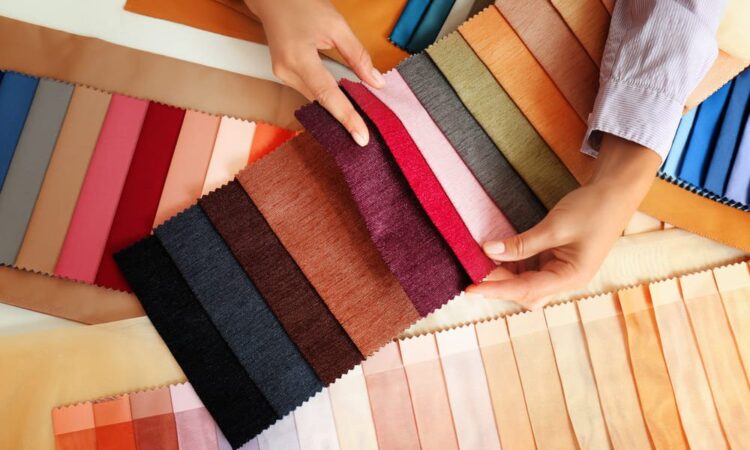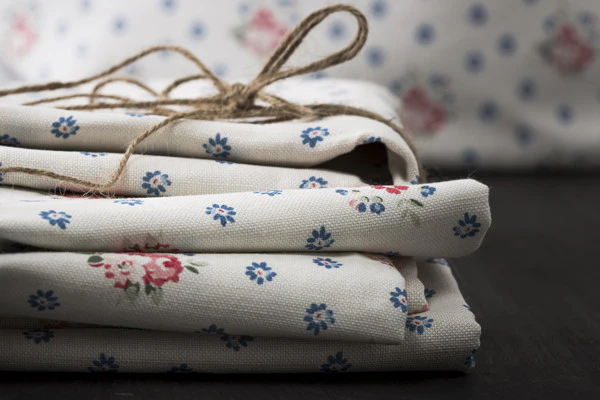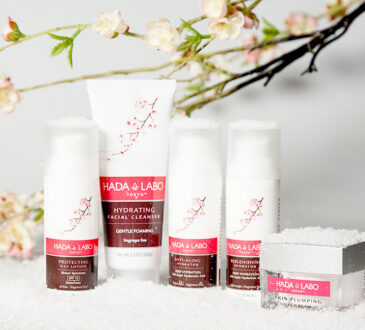
The Future of Linen
Innovations Driving Real Sustainability in Linen Production
Linen has always been a favorite in the textile world for its strength, breathability, and natural charm. But the fast-changing expectations of today’s market demand more than comfort and style. People now want textiles that prioritize clean sourcing, safe processing, and minimized waste. Sustainability in linen production has shifted from a niche advantage to a critical factor for consumers and businesses alike.
This blog takes a clear look at what makes linen unique, how conventional methods impact the planet, and the straight facts about modern approaches that are reshaping the industry. We’ll break down new farming techniques, process improvements, and highlight companies setting the bar for truly sustainable linen. Finally, we’ll discuss where the industry is headed, the obstacles it must tackle, and how consumer choices really can drive better practices.
What is Linen
Linen is a textile made from the fibers of the flax plant (Linum usitatissimum). It stands out for its durability, moisture-wicking properties, and natural luster. Linen holds a significant place in the history of textiles, with evidence of its use dating back thousands of years across Egypt, Europe, and Asia.
How Linen is Made
Traditional linen production involves several steps:
- Cultivation: Flax is grown for 100-120 days. It prefers cooler climates and requires moderate rainfall.
- Retting: After harvest, flax stalks are soaked to loosen the fibers.
- Breaking and Scutching: The plant matter is removed from the fibers using mechanical means.
- Hackling: Fibers are combed and separated to improve texture.
- Spinning and Weaving: Fibers are twisted into yarn, which is then woven into linen fabric.
Linen, prized for both household and fashion uses, is valued for comfort and longevity. However, its environmental impact depends heavily on how the process is handled—from field to finished fabric.
Environmental Impact of Traditional Linen
While linen is often considered an eco-friendly textile, standard production methods do carry environmental costs. Here are the core concerns:
- Water Usage: Flax generally needs less water than cotton, but irrigation and retting can drive up usage, especially in drier regions.
- Pesticides and Chemicals: While flax is more resistant to pests, conventional farming still employs chemical fertilizers and pesticides that can degrade the local ecosystem.
- Waste Generation: Mechanical processing and water retting often produce plant byproducts and unprocessed fibers that can end up as waste if not properly managed.
- Energy Consumption: Older processing equipment may require significant energy, adding to the carbon footprint.
If left unchecked, these challenges prevent linen from living up to its full sustainable potential. The industry must adapt and invest in cleaner, smarter processes.

Innovations in Sustainable Linen Production
Next-gen linen production is focused on cutting waste, reducing water use, and preventing chemical pollution. Here’s how the sector is making real progress:
Organic Farming Practices
- Elimination of Synthetic Chemicals: Organic flax farming bans the use of harmful pesticides, herbicides, and synthetic fertilizers. Instead, farmers rotate crops, plant cover crops, and focus on natural soil enrichment.
- Lower Environmental Risk: These practices protect biodiversity, maintain soil health, and reduce the risk of chemicals ending up in water supplies.
- Certification Impact: Certifications such as GOTS (Global Organic Textile Standard) give buyers assurance about clean sourcing.
Water Conservation Techniques
- Field Management: Drip irrigation and improved water scheduling significantly reduce the amount of water needed for flax crops.
- Mechanical Retting: This method uses minimal water compared to the traditional water-retting process, eliminating the risk of polluted runoff.
- Closed-loop Systems: Reusing water within the manufacturing site prevents waste and lowers the factory’s water footprint.
Waste Reduction and Recycling
- Byproduct Reuse: Companies now process leftover plant matter (shives and seeds) into feed, mulch, or biofuel, cutting landfill dependency.
- Fiber Optimization: Advanced machinery sorts and optimizes more of the harvested fiber, increasing yield and minimizing disposal.
- Recycled Linen: Some producers reclaim post-consumer linen garments, break them down, and spin new yarn, extending the lifecycle of each fiber.
Use of Natural Dyes and Finishes
- Natural Dyes: Plant-based and mineral dyes, free of toxic chemicals, replace standard coloring agents. This reduces risk to factory workers and pollution of waterways.
- Eco-friendly Finishes: Innovations in enzyme and plant-oil finishes give linen the right texture and feel without hazardous solvents or resins.
Case Studies Companies Setting the Standard
Several businesses have stepped up their commitment to more sustainable linen production. Here’s proof that industry leaders are not just talking change—they’re engineering it.
- Libeco: Based in Belgium, Libeco holds both Masters of Linen and GOTS certifications for its organic flax fabric. The company runs entirely on renewable energy and has invested heavily in reducing water usage during processing.
- Linum: This textile brand, active in Northern Europe, builds its collections on closed-loop manufacturing and reclaims the majority of its production waste as agricultural feedstock.
- Eileen Fisher: Known for sustainable fashion, Eileen Fisher uses European flax grown without irrigation, recycles post-consumer linen through their “Renew” program, and commits to safe dyeing processes.
- MagicLinen: This Lithuania-based producer opts for small-batch production, promises transparency in sourcing, and ships materials in plastic-free or recycled packaging.
Each example shows that sustainability is not a one-off upgrade. It’s a change in mindset, supply chains, and daily decision-making.
The Future of Linen Trends Challenges and Opportunities
Trends
- Transparency: More brands are mapping their supply chains and sharing sourcing details with customers.
- Traceability Technology: Digital tools, QR codes, and blockchain are helping track flax from field to finished product, ensuring authenticity and accountability.
- Consumer Education: Brands are leaning into educational content, teaching shoppers about sustainable linen and driving smarter buying choices.
- Circular Models: Take-back and upcycling programs are making linen a repeat player in the textile lifecycle.
Challenges
- Cost Pressure: Sustainable linen costs more to produce, and price-sensitive markets may resist paying a premium.
- Scalability: Small farmers and mills leading the change need greater investment to scale sustainable practices without sacrificing quality.
- Verification: Fraudulent eco-labels and “greenwashing” can erode consumer trust, making certification and third-party verification essential.
Opportunities
- Innovation Investment: Technology (AI, sensors, satellite tracking) is helping reduce waste, optimize harvests, and improve product consistency.
- Eco-driven Demand: The rise of conscious consumerism gives brands a chance to stand out if they commit to real impact, not just the minimum.
- Policy Shifts: Governments worldwide are supporting sustainable textile initiatives with grants and incentives.
Supporting a Greener Linen Industry Starts With Your Choice
The momentum in linen production is shifting to a clear, measurable focus on sustainability. While cutting-edge techniques and ethical brands are setting standards, the real push for greener linen comes from buyers. Your selections signal to the industry what matters most. Choose certified, transparent brands. Look for real data, not vague green claims. If possible, buy less but better quality, and ask brands about their sourcing and waste practices.
Every purchase shapes tomorrow’s textile market. If more companies and consumers align on higher standards, linen can continue to be a standout option for both people and the planet—not just for comfort, but for genuine environmental responsibility.
Sustainable fabrics are eco-friendly textiles crafted to minimize environmental harm while promoting ethical production and biodegradability. Leading choices include organic cotton fabric, cultivated without toxic chemicals and using much less water than conventional cotton; linen, made from flax that grows with minimal resources; and hemp, a resilient, fast-growing crop that enhances soil health. Innovative materials like TENCEL™ and Cupro (Bemberg) are also gaining popularity—they’re derived from renewable sources and produced through closed-loop systems that reduce waste and pollution. Together, these fabrics are shaping a more responsible and environmentally conscious future for the fashion industry.
Explore our diverse range of custom printed, ready mill-dyed, and yarn-dyed fabrics to find the perfect match for your ne xt collection. For personalized assistance or inquiries, reach out to us at hello@fabriclore.com. Experience seamless, authentic, and affordable fabric sourcing with Fabriclore.




